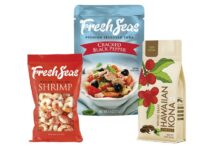In the rapidly changing world of consumer goods, packaging is not just a layer of safeguarding but also happens to be a vital and dynamic element that goes on to influence purchase decisions. Beyond protecting products due to wear and tear because of transportation, it serves as an identity that’s recognizable, thereby enabling consumers to make instant choices.
The consumer perspective
It is well to be noted that packaging happens to be more than just a wrapper; it is indeed a marketing powerhouse that goes on to connect producers as well as consumers. It happens to be a cue and a source of information, not just driving initial purchases but also fostering trust for business that’s repeated.
The journey of the consumers starts with the visual impact when it comes to packaging on the shelf. It happens to be silent but also a powerful communicator, thereby speaking volumes about the product that’s within.
The image that is recognizable becomes a symbol of reliability as well as quality, which is critical for consumer confidence.
Packaging functions
The packaging functions happen to be twofold: logistics and marketing. When it comes to the logistical front, it goes on to protect products due to hazards arising from transportation, thereby maintaining their freshness as well as elongating their shelf life.
It is worth noting that this protective layer happens to be essential when it comes to the physical well-being of the goods during the course of transportation. The option of packaging material goes on to play a major role in ensuring products find the right consumers in the best possible state.
In terms of the marketing side, packaging happens to go beyond aesthetics as it goes on to communicate with consumers, thereby influencing perceptions, analysis, and attention at the point of sale.
The material, along with the design choices within the scope of packaging, also cater to consumer comfort, thereby affecting storage, hygiene, and safety. It is time we explore the multifaceted functions of packaging with more in-depth detail.
Safeguarding & Preserving Goods
Packaging doesn’t happen to be just about looks; its primary function is to shield the products from the challenges during transportation. It happens to act as a physical barrier, thereby preventing damage from certain elements, vibrations, and also compression in the course of handling.
Apart from this, it also makes sure to preserve freshness when it comes to perishable items and also enhance the entire lifespan of products.
Convenience along with consumer experience
Apart from protection, packaging also goes on to add convenience to consumers lives. Right from stackable shapes when it comes to easy storage to novel designs for seamless and trouble-free consumption, packaging is customized to meet logistical as well as consumer needs.
Material choice reflects such requirements, thereby impacting how consumers deal with the product.
Packaging ought to strike that much-delicate balance, making sure that it enhances the consumer experience. If in case it fails in doing this, the consumer’s interaction with the product can go on to be negative.
Challenges when it comes to opening, breaking, uncomfortable storage, or a shape mismatch with shelves can go on to contribute to a less satisfying consumer experience.
The marketing power of packaging
Packaging happens to be the silent spokesperson for a brand, broadcasting messages about product characteristics. Unlike other elements of marketing, it’s the only element that consumers take home after making a purchase.
Its capacity extends beyond the transaction; it builds as well as reinforces brand values over time. But it is well to be noted that packaging’s power is not one-sided, as it can either strengthen or even break brand relationships.
If we take the iconic Coca-Cola bottle into account, the contour shape is not just operational but has gone on to become a symbol of the brand. In this regard, packaging becomes a tangible representation of brand identity, thereby showcasing a lasting impression upon consumers.
It happens to be the first and last touchpoint in the consumer’s path, making it a crucial element when it comes to the brand-consumer relationship.
Packaging is in no way just about covering a product; it happens to be a dynamic tool that shapes consumer options and creates brand loyalty. Taking into account its multifaceted functions is key to traversing through the intricate relationship between producers and consumers.
As one goes on to witness innovations in terms of sustainable packaging as well as the evolving landscape of consumer preferences, packaging’s role in shaping consumer choices and experiences continues to be an intriguing yet fascinating journey.



























